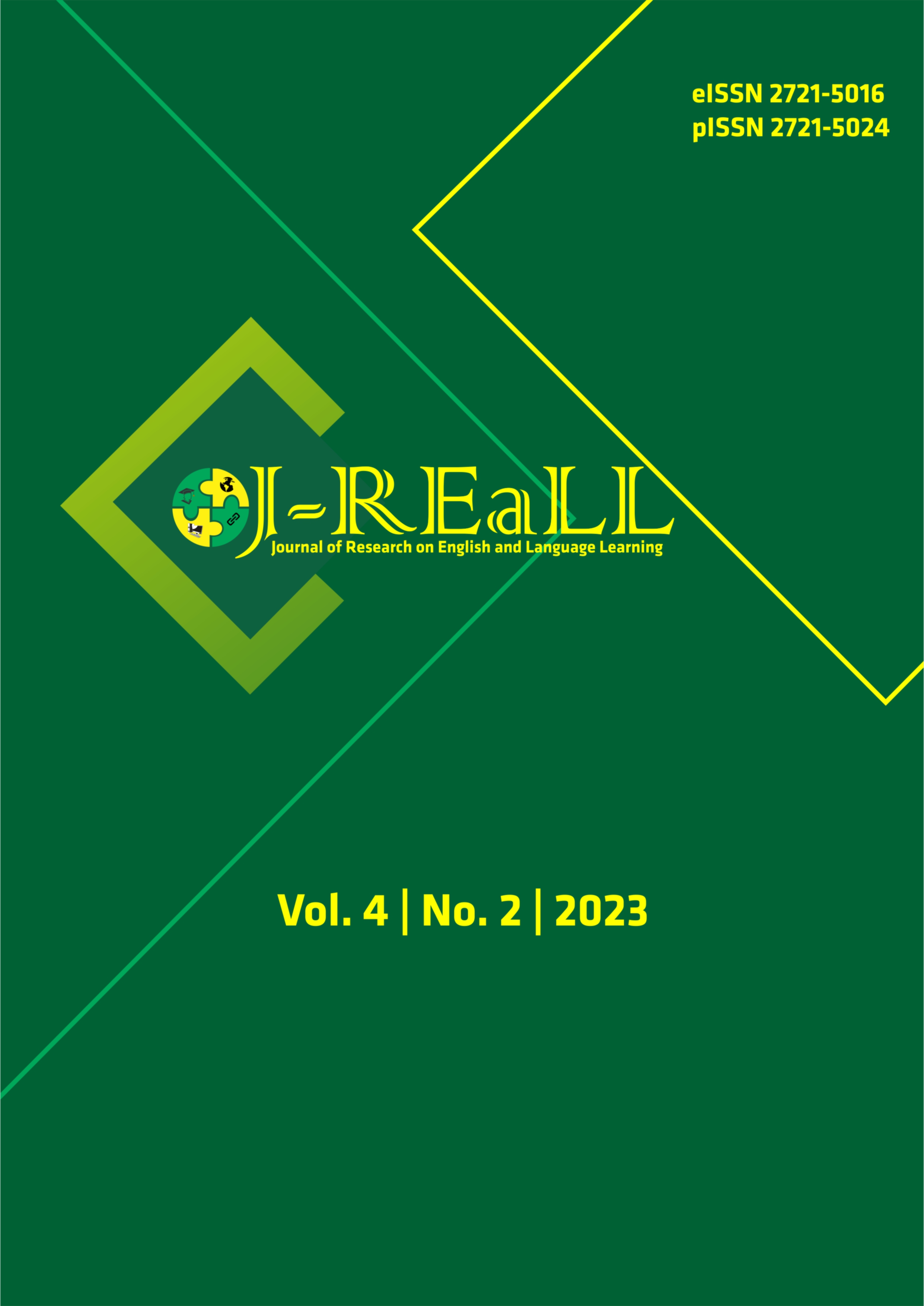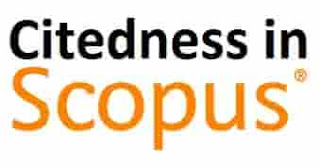English learning style preferences: A case study of civil engineering students
DOI:
https://doi.org/10.33474/j-reall.v4i2.20158Keywords:
English, language learning, polytechnic, students' style, vocationalAbstract
In learning English, it is clearly seen that students have their own ways and abilities to understand information or learning materials. The method used by students in understanding the information is generally known as learning style. This study aims to identify the dominant learning style used by students in learning English at civil engineering class. This study was survey research. There are two types of learning styles studied. First, it can be seen from the perceptual aspect which has 3 types of learning styles, namely visual, auditory, and kinesthetic. Second, learning styles are seen from the social aspect which consists of 2 types, namely groups and individuals. The participants in this study were 248 students briefly divided into 9 classes. In determining the participants, the researcher precisely used a total sampling technique. Furthermore, the researcher used a questionnaire as an instrument to obtain data. The results of the study strongly showed that students used all learning styles, namely visual, auditory, kinesthetic, group, and individual. Based on the data obtained and analyzed, the highest percentage of learning styles for the perceptual aspect is visual with a total percentage of 45.5%. Then, for the social aspect, which gained a percentage of 44.3%. Based on the data obtained in this study, it can be concluded that the learning style of civil engineering students is more dominant using the perceptual learning style compared to the social learning style, and this can be seen from the data presented in this study.
References
Hassan, M. A., Habiba, U., Majeed, F., & Shoaib, M. (2021). Adaptive gamification in e-learning based on students’ learning styles. Interactive Learning Environments, 29(4), 545-565.
Gay, L. R, and Airasian, P. (2000). Educational research. New Jersey: Prentice- Hall, Inc.
Gay, L. R, Geoffrey E. Mills and Airasian, P. (2012). Educational research: Competencies for analysis and applications. New York: Pearson.
Jakob, J. C. (2018). Analysis of American slang in the movie of “The Blind Side”. Journal of English Education Studies, 1(2), 79-85.
Karimullah, I. W., Rahmawati, S. K., & Gashimov, E. (2021). Foreign student guest lecture and Indonesian EFL students’ motivation in cross-culture understanding course. Journal of Research on English and Language Learning (J-REaLL), 2(2), 145–152. https://doi.org/10.33474/j-reall.v2i2.12633
Karthigeyan, K and Nirmala, K. (2013). Learning style preference of English language larners. Vol.2 No. 1. Retrieved on March 2015. Congress Cataloging In Publication Data.Library Cataloguing.
Leite, W. L., Svinicki, M., & Shi, Y. (2010). Attempted validation of the scores of the VARK: Learning styles inventory with multitrait–multimethod confirmatory factor analysis models. Educational and psychological measurement, 70(2), 323-339.
Monette, Duane R et al. (2014). Applied social research: A tool for the human services. 9th Ed. Belmont: Cengange Learning.
Othman, N., & Amiruddin, M. H. (2010). Different perspectives of learning styles from VARK Model. Procedia Social and Behavioral Sciences, 7(C), 652-660. Retrieved from http://ac.els-cdn.com/S1877042810020926/1-s2.0-S1877042810020926-main.pdf?_tid=9802c120-a889-11e6-90f1-00000aab0f02&acdnat=1478922139_6001971e9b01e03c2e8e11b7bf0d317d
Shen, C. W., Ho, J. T., Ly, P. T. M., & Kuo, T. C. (2019). Behavioural intentions of using virtual reality in learning: perspectives of acceptance of information technology and learning style. Virtual Reality, 23, 313-324.
Sudijono, Anas. (2010). Pengantar statistik pendidikan. Jakarta: PT Raja Grafindo Persada.
Sugiyono. (2013). Metode penelitian administrasi. Bandung: Alfabeta.
Shirazi, F., & Heidari, S. (2019). The relationship between critical thinking skills and learning styles and academic achievement of nursing students. The Journal of Nursing Research, 27(4), e38.
Toyama, M., & Yamazaki, Y. (2020). Are there effects of a match between learning style and teaching style in an EFL classroom? Innovation in Language Learning and Teaching, 14(3), 243-258.
Downloads
Published
How to Cite
Issue
Section
License
Copyright (c) 2023 Sylvia Irene Persulessy, Yelliza Yelliza, Ahmad Nusi, Juvrianto Chrissunday Jakob, Hindri Febri Ana Sari

This work is licensed under a Creative Commons Attribution 4.0 International License.
Authors who publish this journal agree to the following terms:
- Authors retain copyright and grant the journal right of first publication with the work simultaneously licensed under a Creative Commons Attribution License that allows others to share the work with an acknowledgement of the work's authorship and initial publication in this journal.
- Authors can separately make additional contractual arrangements for non-exclusive distribution published by the journal (e.g., publish it in a book), with an acknowledgement of its initial publication in this journal.
- Authors are allowed and encouraged to send their work via online (e.g., in the institutional repositories or their website) after published by the journal.





















